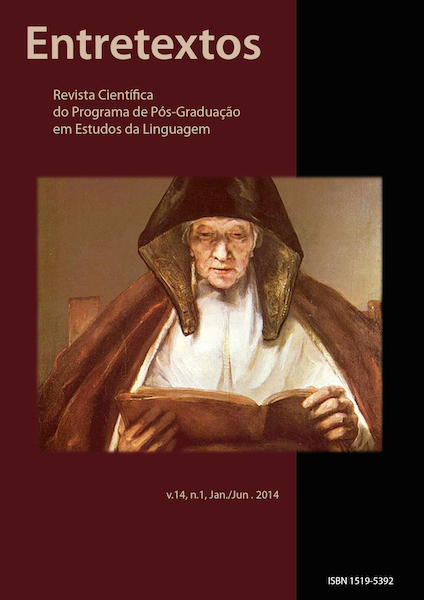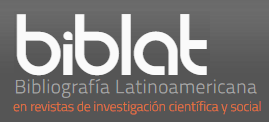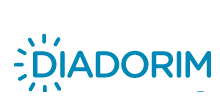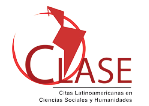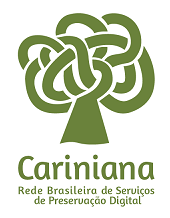Conteúdos culturais em material didático de língua espanhola
DOI:
https://doi.org/10.5433/1519-5392.2014v14n1p283Palavras-chave:
Cultura, Competência Comunicativa Intercultural, Ensino de LínguasResumo
O objetivo dessa investigação foi de apresentar conteúdos referentes à cultura da língua espanhola presentes no livro Español Sin Fronteras 2. Para isso, selecionamos quatro conteúdos do livro em questão: a música ojalá que llueva café; um texto informativo intitulado como son los jóvenes españoles de hoy; leitura de um texto literário referente a um pequeno trecho da obra escenas de cine mudo; e, por último, um texto relativo a lugares exóticos da América do Sul. Para obtenção de fundamentos teóricos e práticos, a pesquisa apresentou contribuição de autores como, entre outros, Deardorff, Vera Hanna e Fantini. Os assuntos do referencial teórico discorreram sobre o ensino de línguas, cultura, interculturalismo, competência comunicativa e competência comunicativa intercultural. O que se pôde concluir dessa pesquisa é que o referido livro apresenta conhecimento linguístico aliado a conteúdo cultural da língua alvo. Acreditamos que a aproximação do aluno a conteúdos culturais da língua alvo encontrados no livro Español Sin Fronteras 2 pode contribuir com o desenvolvimento da competência comunicativa intercultural.
Downloads
Referências
BYRAM, Michael; GRIBOVA, Bella; STARKEY, Hugh. Developing the intercultural dimension: Language teaching: a practical introduction for teachers. Council of Europe, Strasbourg, 2002.
BRANCO, Diana Manuel Sousa. A Competência Intercultural no Ensino: Propostas para formação contínua de professores dos 2º e 3º ciclos do ensino básico. Universidade Aberta: Mestrado em Português Língua Não Materna. Portugal, 2011.
CANALE, Michael. De la competencia comunicativa a la pedagogía comunicativa del lenguaje. In: CÀNAVES, M. L. (Coord.). Competencia Comunicativa, documentos básicos en la enseñanza de lenguas extranjeras. Peñalara: Edelsa, 1995.
CONSELHO DA EUROPA. Quadro europeu comum de referência para as línguas: aprendizagem, ensino, avaliação. Coleção: Perspectivas Actuais/Educação Porto, Portugal: Edições Asa, 2001.
DEARDORFF, Darla Kay. The SAGE Handbook of Intercultural competence.Thousands Oaks, CA: Sage, 2009. DORN, Gabriela; CAVALIERI-KOCH Alexandra. Intercultural Skills: a guide to working with other cultures. Cilt, The National Centre for Languages, 2005.
FANTINI, Alvino. A Central Concern: Developing Intercultural Competence. SIT Occasional Paper Series, issue n. 1, 2000.
FANTINI, Alvino. Exploring and assessing intercultural competence. Federation EIL, Brattleboro, 2006.
GENC, Bilal; BADA, Erdogan. Culture in language learning and teaching. The Reading Matrix. Çucorova, Turquia, v. 5, n. 1, p.73-84, abr., 2005.
HANNA, Vera Lucia Harabagi. O viés intercultural no ensino de línguas estrangeiras: aprendizes como etnógrafos modernos. In: BARROS, D. L. P.; HILGERT, J. G.; NEVES, M. H. M.; BATISTA, R. O. Língua e Linguística. 2013. No prelo.
LOBATO, Jesús Sánchez; GARCÍA, Concha Moreno; GARGALLO, Isabel Santos. Español Sin Fronteras 2: libro del alumno. Sociedad General Española de Librería, S.A. Madrid, 2007.
OLIVEIRA, Sara. Texto visual, estereótipos de gênero e o livro didático de língua estrangeira. In: OLIVEIRA, Sara (Org.). Trabalhos de Linguística Aplicada. Campinas, 2008.
REIS, Kelly Cristina; BROCK, Maria Paula Seibel. Inter-relação cultura e língua para professores de língua inglesa. Revista Perspectiva: URI, Erechim, v. 34, n. 128, p.73-88, dez. 2010.
SILVA, Victor Ernesto Silveira. A Interculturalidade nos livros didáticos em inglês. Tabuleiro de Letras: revista do programa de pós-graduação em estudos de linguagens. UNEB, Bahia, 2011.
WALESKO, Ângela Maria Hoffmann. A interculturalidade no ensino comunicativo de língua estrangeira: um estudo em sala de aula com leitura em inglês. 2006. 138 f. Dissertação (Mestrado em Estudos Linguísticos). Faculdade de Letras, UFPR, Curitiba, 2006.
Downloads
Publicado
Como Citar
Edição
Seção
Licença
Entretextos adota a Licença Creative Commons Attribution 4.0 International, portanto, os direitos autorais relativos aos artigos publicados são do(s) autor (es).
Sob essa licença é possível: Compartilhar - copiar e redistribuir o material em qualquer suporte ou formato. Adaptar - remixar, transformar, e criar a partir do material, atribuindo o devido crédito e prover um link para a licença e indicar se mudanças foram feitas.

